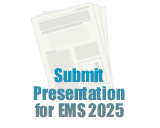EPA Program Updates
Oral Presentation
Prepared by S. Chattopadhyay, T. Strock, K. Kirkland
U.S. Environmental Protection Agency, Office of Land and Emergency Management, Waste Characterization Branch, 1200 Pennsylvania, Ave., NW, Mail code 5304T, Washington, DC, 20460, United States
Contact Information: [email protected]; (202) 566-0493
ABSTRACT
The United States Environmental Protection Agency’s (USEPA’s) Office of Resource Conservation and Recovery (ORCR) publishes and updates the Test Methods for Evaluating Solid Waste, Physical/Chemical Methods (SW-846) as new information and data become available. Unknown waste materials that have not been listed needs to be characterized to determine if that waste could be considered as hazardous or non-hazardous. The classification of the waste determines the appropriate means for disposal while the costs and effort for disposal will be dependent on the nature of the waste and will generally be greater for material classified as hazardous. The accuracy of determining whether a particular waste is hazardous or non-hazardous depends on sample collection, processing, and testing procedures for determining the characteristics of the waste. Laboratory procedures must be rigorous and capable of adequately characterizing the waste sample. The USEPA, in collaboration with the stakeholders, is continuing to develop methods and guidances with appropriate reference material and applicable validations for determining characteristics of waste samples. The characterization procedures include sample collection, field and laboratory quality control, extraction and analytical procedures, demonstration method performance, determination of detection limits, quantification limits, and assessing the accuracy and precision of the procedures. This presentation is to provide an update on the upcoming methods development activities and our path forward. Topics will include the determinations of ignitability and revisions to flashpoint of liquid wastes, determination of elemental concentrations in soil and sediment using field portable x-ray fluorescence spectrometry, sample collection and processing of contaminated waste, in-vitro bioaccessibility assay for arsenic, and opportunities for future projects and collaboration with stakeholders who have interest, extensive knowledge, and experience in the relevant areas.

